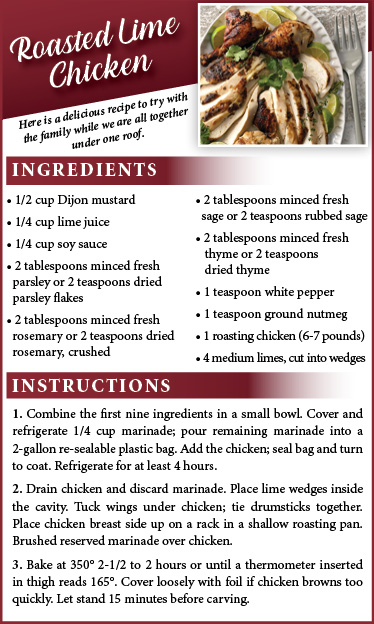Hello my Foodie Friends!
This past week, as Paula and I began some “spring cleaning,” I was going through our kitchen gadget drawer evaluating the tools that I use. One tool that I use on a regular basis is an instant-read thermometer. An instant-read thermometer might seem like one of those kitchen gadgets you don’t really need. Most of us cook by the seat of our pants anyhow, right? I think you’ll find that if you get a thermometer, you’ll use it a lot, and it will increase your confidence in a wide range of kitchen tasks. One of the most important reasons why we are open for a few hours a day is because we sell a lot of thermometers to restaurants in our town. Let me tell you that the chefs in this town are very serious about food safety!
Everyone should have an instant read thermometer in their kitchen, as it gives you better control over everything from chicken thighs to caramels. So named because it gives a temperature reading very quickly, an instant-read thermometer is an essential food safety and sanitation tool. An instant-read thermometer consists of a stainless steel stem that serves as a temperature probe, and either a dial or a digital readout. One advantage of the analog type (the kind with the dial) is that they can be calibrated relatively easily, so you’ll be sure of always getting a true reading.
Note that an instant-read thermometer is different from a meat thermometer. An instant-read thermometer is used for taking a quick temperature reading of an item, but you don’t leave it in the food while it cooks. A meat thermometer is inserted into a piece of meat before roasting and is left in the roast during cooking.
So, why do you need an instant read thermometer? Here are some of the things I use an instant-read thermometer for:
Checking to see if oven-baked food like lasagna is hot enough to serve (160 F is great; 140 F will do if you are in a hurry)
Making sure custard isn’t overcooked (if you get to 185 F the egg proteins will get very tough)
Food Safety 101: if you are going to keep something perishable out of the refrigerator for an extended period of time it must be below 40 F or above 140 F
Food Safety 102: make sure anything with egg yolks reaches at least 160 F to kill salmonella (especially if it will be served to the young, old, or immunocompromised)
Checking refrigerator temperatures – just stick it in your soymilk or pickle jar for a second. Try it on a few shelves; you might be surprised at the variation.
Oil temperature for deep frying.
Sugar temperature for candy.
Bread is done at about 205 F (no more knocking on the loaf and listening for a hollow sound); quickbreads around 195 F.
How do you use an Instant-Read Thermometer? An instant-read thermometer is ideal for checking the temperatures of liquids such as stocks and soups, making sure they are cooling quickly enough to minimize the growth of bacteria; or for checking the temperatures of hot foods that are being held for service on a buffet.
It can also be used to check the internal temperature of a roasting chicken. Insert the stem into the deepest part of the thigh, where it meets the breast, making sure not to hit bone. Just remember that each time you pierce the bird like this, some of its juices escape, causing it to dry out.
Avoiding Cross-Contamination: Take care to wash and sanitize the thermometer’s stem after it has been inserted into a food product (such as the undercooked poultry mentioned above) and before using it again on another item. Otherwise, you risk passing bacteria from one product to another, which is called cross-contamination.
At Compliments to the Chef, one of our favorite instant-read thermometers is the “ThermoPop” by Thermoworks. The ThermoPop offers super-fast readings within the final degree in only 3 to 4 seconds! Designed for serious chefs and professionals, the ThermoPop features big digits and a backlight for dark conditions. Molded-in seals and buttons make it splash-proof. Durable construction outlasts similarly priced pocket thermometers. Simple operation reduces user errors. Wide range is suitable for frozen foods and deep fryer testing. Accuracy is guaranteed to remain within ±2°F (1°C) up to 248°F (120°C).
What’s cooking in your kitchen Saratoga? Please call, John, at 518-226-4477 to set up an appointment to assist you is your culinary needs. I’ll greet you wearing my mask and remember, “Life Happens in the Kitchen.”
Take Care,
John & Paula


























 How to resolve AdBlock issue?
How to resolve AdBlock issue? 









